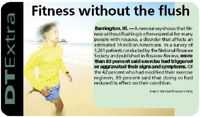- General Dermatology
- Eczema
- Chronic Hand Eczema
- Alopecia
- Aesthetics
- Vitiligo
- COVID-19
- Actinic Keratosis
- Precision Medicine and Biologics
- Rare Disease
- Wound Care
- Rosacea
- Psoriasis
- Psoriatic Arthritis
- Atopic Dermatitis
- Melasma
- NP and PA
- Skin Cancer
- Hidradenitis Suppurativa
- Drug Watch
- Pigmentary Disorders
- Acne
- Pediatric Dermatology
- Practice Management
- Prurigo Nodularis
Article
Clearance rates high, durable after 5-ALA PDT, study finds
New Orleans — Results of a multicenter phase 4 study confirm the efficacy and safety of photodynamic therapy (PDT) using 20 percent 5-aminolevulinic acid (5-ALA) topical solution (Levulan Kerastick, DUSA) for the treatment of face and scalp non-hyperkeratotic actinic keratoses (AKs), according to Eduardo H. Tschen, M.D., who spoke at the 63rd Annual Meeting of the American Academy of Dermatology (AAD).

Dr. Tschen, study investigator and practitioner in Albuquerque, N.M., presented findings from an open-label trial that enrolled 110 patients who underwent treatment of 748 lesions. All participants had type I to type V skin, but the majority had skin type I to type III (87 percent).
Study particulars Each patient had two lesions selected for biopsy, and remaining lesions were treated with the topical 5-ALA solution followed by blue light irradiation (10 J/cm2 at 10 mW/cm2; BLU-U) 14 to 18 hours later. A second treatment was administered one month later if necessary, and patients were followed monthly to one year post-treatment.
"The premarketing studies of 5-ALA PDT showed it worked well for clearing non-hyperkeratotic lesions on the face and scalp, but patients were only followed for 12 weeks. When evaluating a treatment for AKs, it is important to establish that clearance persists. The recurrence rate associated with 5-ALA PDT in this phase 4 investigation compares favorably with data published for other AK treatment modalities, and we consider it a welcome additional option for the management of this common problem," Dr. Tschen says.
Study results To be eligible for the study, patients had to have six to 12 discrete grade 1 or grade 2 AK lesions (on a 4-point grading scale where 0 = none and 3 = very thick and/or hyperkeratotic) on the face or scalp. The average patient had 6.8 lesions.
At the one-month visit, 76 percent of lesions had cleared completely, and 66 patients (60 percent) underwent a second treatment for AKs still present. The rate of complete clearance was in the range of 85 percent to 86 percent between the three-month and seven-month visits, 80 percent to 83 percent over the next several months, and 76 percent at study completion.
Nearly three-fourths of the treated lesions were on the face. At all visits, response rates for the facial lesions were about 15 percent higher than for scalp lesions. Grade 1 and grade 2 lesions responded similarly to treatment.
Non-responders At month three, 66 (9 percent) of lesions had not responded. Most of those were biopsied, and the histopathology report showed the majority were AKs. Two of the non-responding lesions were found to be squamous cell carcinoma (SCC), as were 10 (5 percent) of the 220 lesions biopsied at baseline. A total of 139 recurrent lesions were biopsied; 127 (91 percent) were identified as AKs, but there were nine (7 percent) SCCs.
"These data just reinforce the points that no available treatments for AK clear all lesions permanently, and all patients with AKs need to be followed because of their predisposition to develop skin cancer," Dr. Tschen says.
Favorable safety and cosmesis 5-ALA PDT was not associated with scarring or adverse pigmentary changes, whereas pre-existing hypo- or hyperpigmentation often improved with time.





